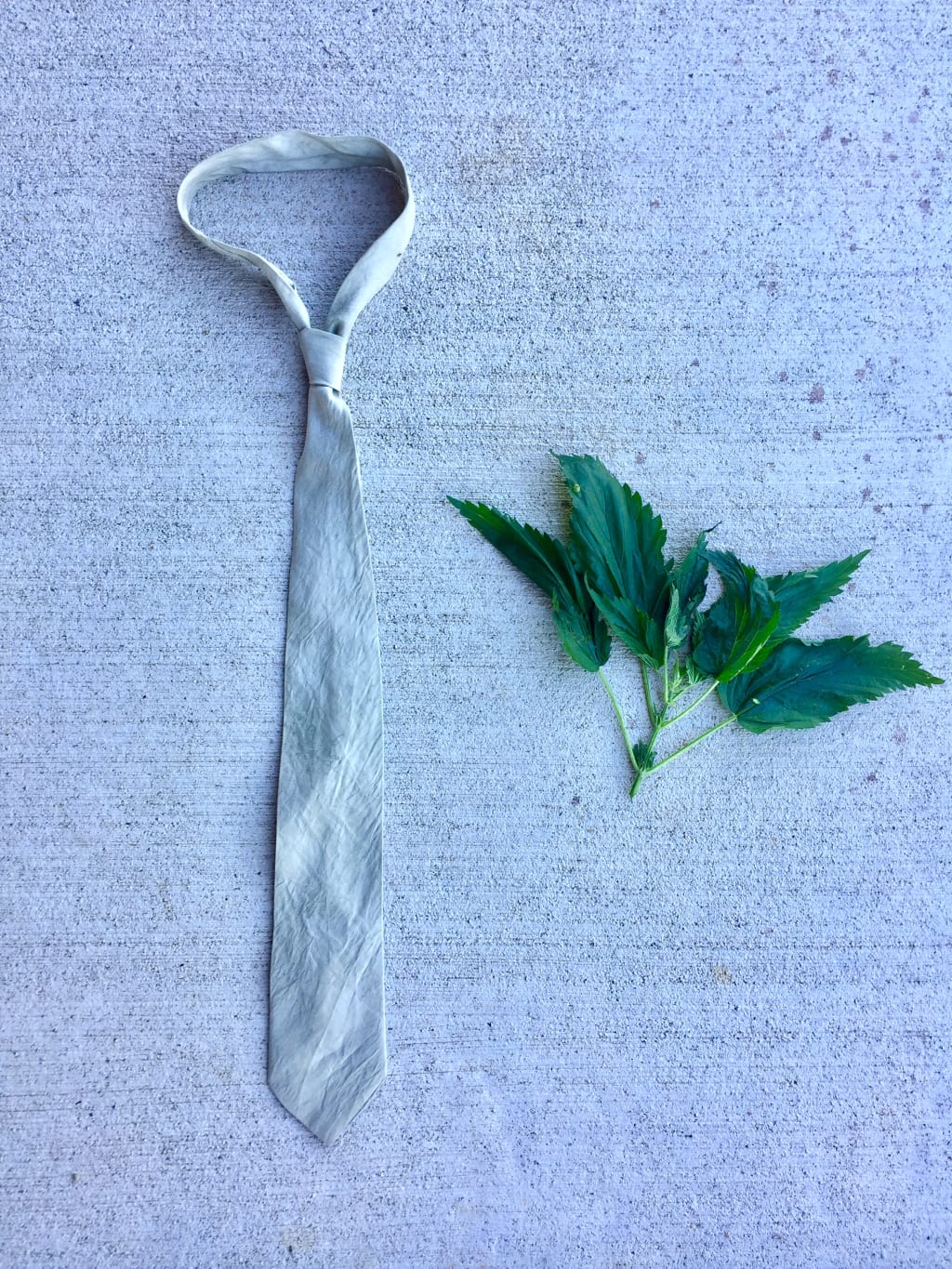Looking at the Weeds
Using Stringing Nettle to make beautiful things

I live in one of the flyover states, where there are more cows than people and we measure distance in miles not minutes. My commute to work is 14 miles (or 25 minutes) and I drive through one town of 500 people. I drive on highways with ditches full of weeds, grass, and mini fields of dandelions. Many of these plants are pests and get sprayed with pesticides in the summers to either kill or restrain them from spreading into fields. But where people see weeds, nuances, and annoyance, I see color, joy, surprise and life. I pick “weeds” and use them to create dyes for fabrics and yarns that I craft with. Plants are an incredible source of color for the fabrics I use when making gifts for family and friends and each piece created is truly unique.
One of the “weeds” I have used for dyeing is stinging nettle. Stinging nettle is not a popular plant to the general public where I live. Historically, it has been known and used for its herbal benefits but now it is primarily known for the hives and rash people develop when walking through patches on hikes. It carpets the ground under the tall oak trees that grow around the river that meanders through my town.
But where most people see a rash, I see sage green ties and scrunchies that after being created will be worn proudly by my family and friends. For dye, I prefer nettle to be cut in early spring for a light green color as the color changes with the seasons, ranging from a light green to a dark gray. I am partial to the light green, so I start my harvest right when the world starts to bloom again after winter.
Harvest starts by putting on a pair of gloves so I don’t break out into a rash and then using a pair of scissors to clip off just the top leaves from the plant. The top leaves give off the best color and allow the plant to continue to grow. The leaves get weighed and then go into a bucket. Boiling water gets added, and the bucket gets covered. Then the waiting starts.
In order to get the best color, you have to wait 3-4 weeks after the dye is made before it is ready to use. When the bucket is opened, you are met with the pungent smell of rotting leaves. It is truly appalling if you are too close to the bucket when it is opened. In order to make the best dye, the smelly leaves get strained out and liquid that is left is kept for dye. Then the pre-wetting and mordanted fabric can be added. My fabric for this project was silk taffeta that had been in my stash for years waiting for a great gift idea. It has a crinkle to it and I wanted to make a tie for my brother as a thank you for helping me pick the nettle so I used about 1 yard of fabric. The silk and dye are simmered in a large pot for 1 hour and then left overnight to cool. After a quick rinse, the fabric gets hung to dry and is cured for several days. The longer it waits before it gets rinsed with soap, the better the color will stay.
After the silk gets washed, it gets cut into the correct shape for a tie I am making. After waiting 3-4 weeks for the fabric to be ready, the cutting and sewing is the fast part of the process. The nettle dye created a very pretty tie-dye effect on the fabric, so pattern placement was very important for this project. My trusty sewing machine and sewing scissors fly over the fabric and make form out of flat. The tie is ironed and wrapped nicely, waiting for the right occasion to be gifted.
Dyeing fabric and fibers with plants has taught me more about life than most other activities I do. The entire process is time consuming, messy, and sometimes really, really smelly. But through the time, mess and smell, it has taught me that some of the best results in life take a really long time to be achieved and are not beautiful in the beginning. I also am reminded every time I start on a new project with natural dye that there is value in looking past the preconceived notion of “weeds” and instead seeing color and joy. I have found that it can be applied to anything in life. Nature can teach us so many things, but I like to start with looking at the weeds.
About the Creator
Liz Davelaar
Lover of nature, clothing, and creating





Comments
There are no comments for this story
Be the first to respond and start the conversation.